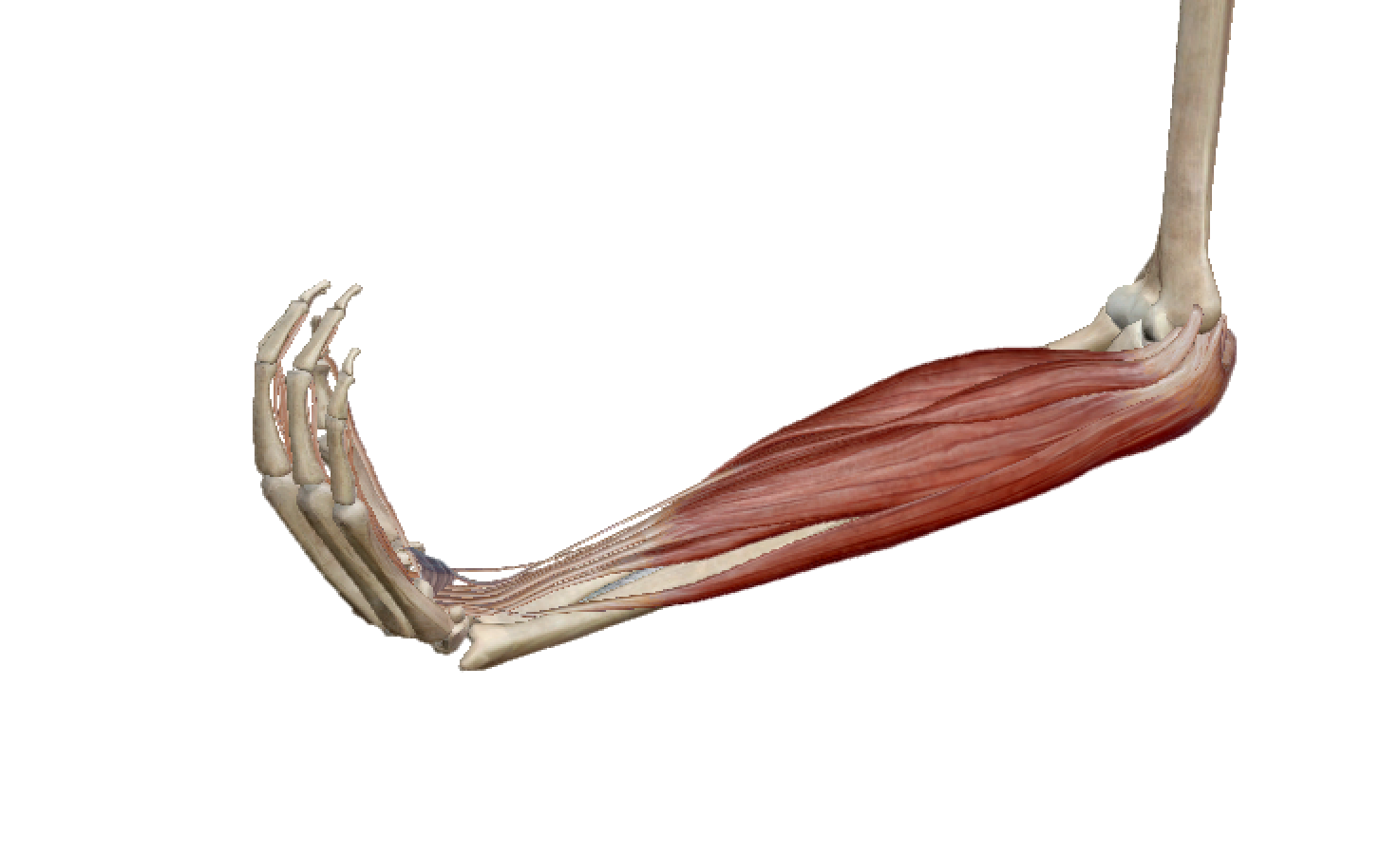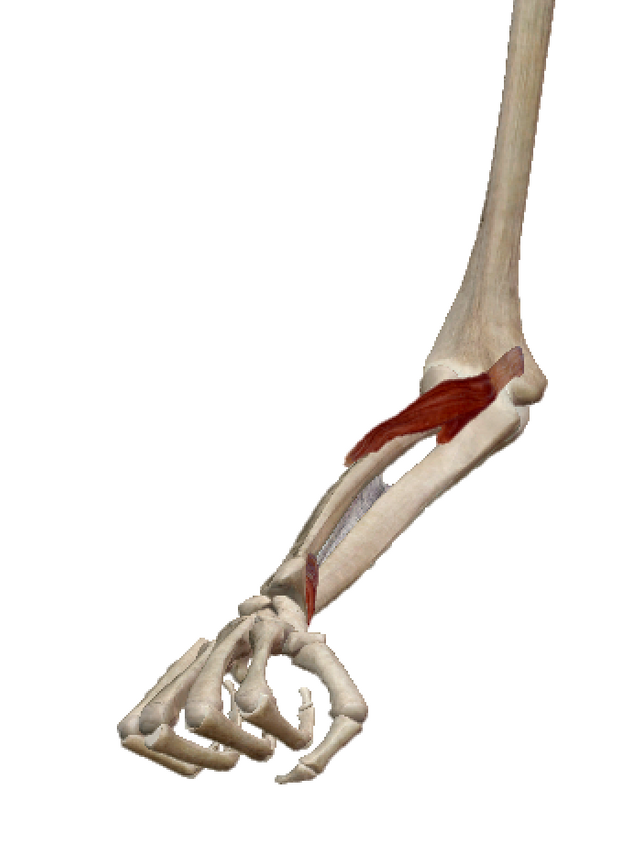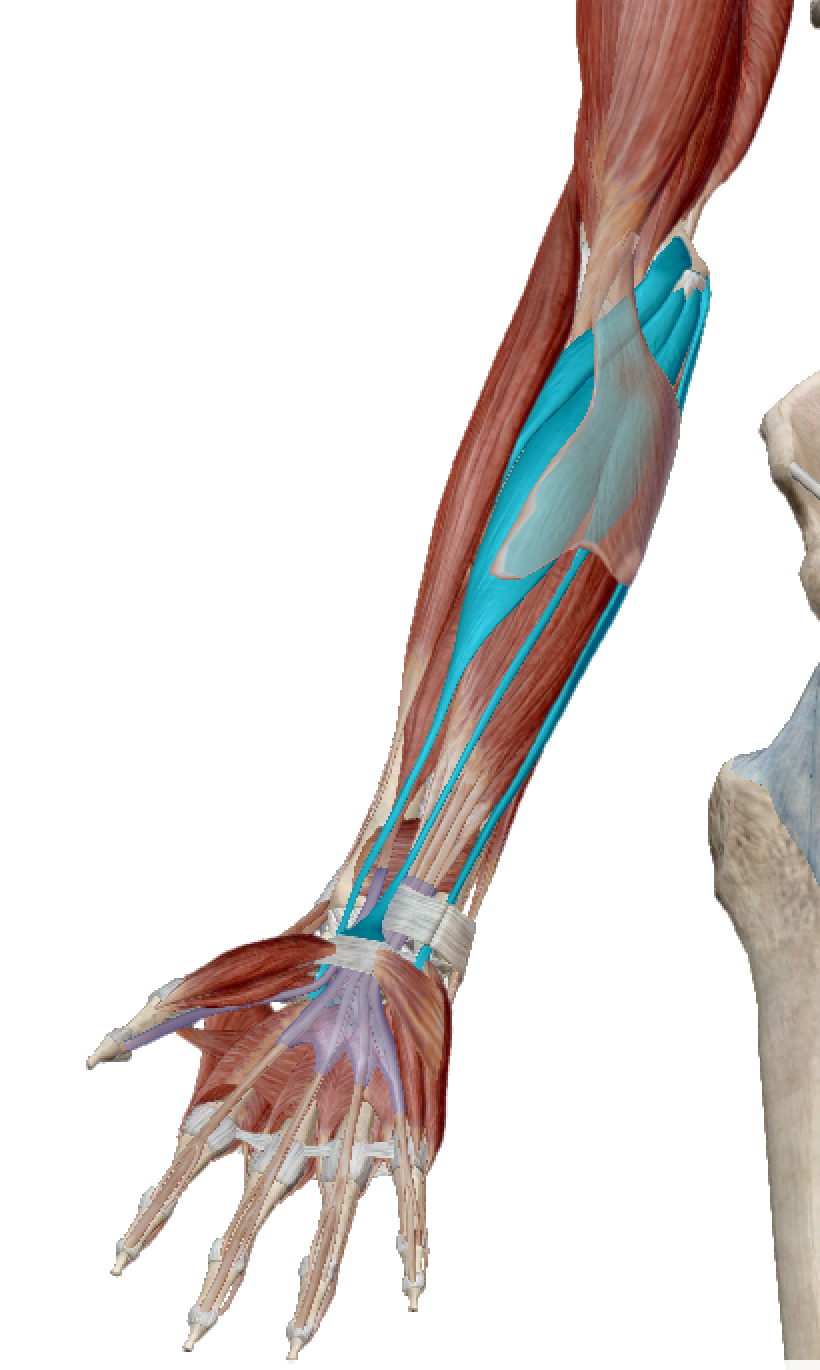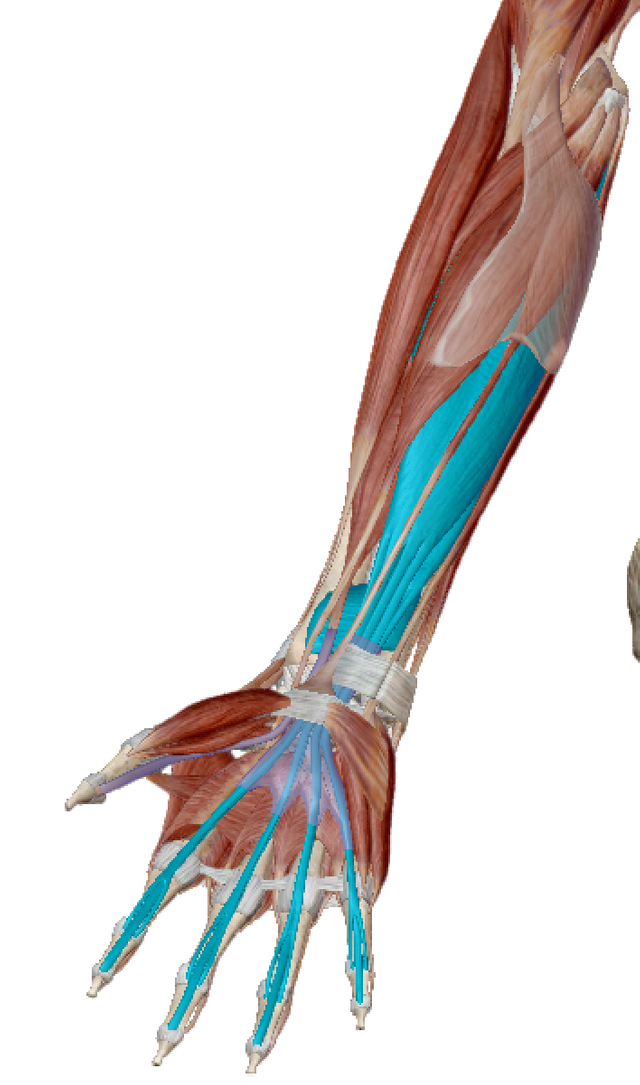Anatomy lesson - How you flex your wrist and pronate your hand
Many things contribute to the flexing of the wrist and pronation of the hand.
But first lets describe what these actions actually are.

To flex your wrist, you can lift your hand up to eye height and point at your own face.
See how your wrist is bent over?... this is wrist flexion.
As for pronation, imagine you are bouncing a basket ball, the palm of your hand is facing the ground.
This is pronation.

As a fun aside - the opposite of this is called supination.
(To remember which is which, imagine holding a bowl of soup with one hand - that's supination, and being a pro basketball player bouncing a ball, that is pronation)
Anyway, the muscles that control flexion of the wrist and pronation of the hand are all located in what is called the 'flexor pronator compartment'. It's located on the inside of your forearm (called the medial side because it's closest to the middle of your body). A lot of them connect right around the pointy bone on the inside of your elbow (called the medial epicondyle)

Located on the top layer (just under the skin) is the superficial layer of these muscles - there are 4 muscles in this layer, and there are a further 3 muscle layers beneath this top layer, but don't worry, they only have 1 muscle each.
So in the top layer we have 4 muscles which are:
- Pronator teres on the left of the picture - it contracts and rolls your hand over into the pronated position.
- Next to that we have flexor carpi radialis (flexor = flexing ..obviously, carpi = another word for wrist bones, and radialis = the radius bone of your forearm, which is the one that's on tte the thumb side of your wrist, so this muscle flexes the thumb side of your wrist),
- then we have palmaris longus - which is a vestigial muscle - some people don't even have this muscle at all!
- then we have flexor carpi ulnaris - which, using the same logic as before is a flexor of the wrist bones on the ulna side of the wrist - i.e. the little finger side.
Underneath these 4 muscles we two big flexor muscles, each getting it's own layer.
Directly under the 4 muscles of the superficial layer is flexor digitorum superficialis (i.e. flexor of the digits (and wrist) that is superficial (i.e. close to the skin surface)
Directly under that is flexor digitorum profundus which does largely the same thing as flexor digitorum superficialis at the wrist (but they differ in their action at the digits a little bit, and their innervation)
The last of the four layers, the deepest of the 4 is called pronator quadratus - it's right down near the wrist and sorta looks like a sweatband lying diagonally underneath the other muscles. It too like pronator teres we saw earlier helps you rotate your hand over (to bounce a basketball...remember?!)

Anyway, those are the muscles that allow you to flex your wrist and pronate your hand
Until next time
Cheers
Ash
Lovely post
Glad you liked it!
Yeap. You are welcome